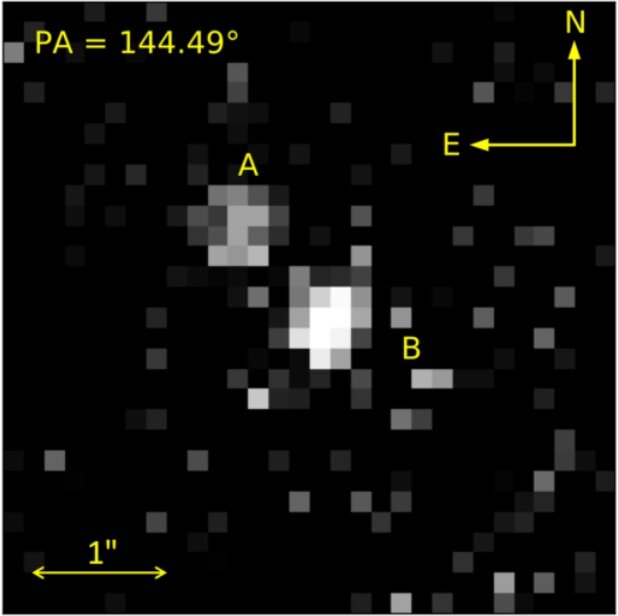Using the Gemini North telescope, astronomers made observations of a binary system known under the designation SDSS J222551 (SDSS J222551.65+001637.7AB). It turned out that it consisted of a white and a brown dwarf.

SDSS J222551 is located at a distance of 711 light-years from Earth. It was discovered back in 2006, but until recently, astronomers had little information about this system. Its main component is a hydrogen-rich white dwarf which mass is one-third less than the mass of the Sun. As for the second component of the system, its nature remained in question.
To clarify the nature of the white dwarf satellite, astronomers resorted to the GNIRS spectrograph installed on the Gemini North telescope. The data it collected helped to establish that this object was a brown dwarf. Its mass is estimated at 25-53 Jupiter masses, and its orbit passes at a distance of 207 au from the white dwarf (this is five times more than the distance from the Sun to Pluto). Astronomers also managed to establish the age of the system. It is about 2 billion years old.
To date, SDSS J222551 is only the eighth system known to astronomers, consisting of a white and brown dwarf. According to the authors of the find, its two components evolve separately, since they are at a great distance from each other. At the same time, it increased almost three times after the formation of the white dwarf. According to scientists, at the time when it was still an ordinary star, the orbit of the brown dwarf lay at a distance of about 70 au.
Earlier we talked about how astronomers found the remains of ancient planets in orbit around two white dwarfs.
According to https://phys.org
Follow us on Twitter to get the most interesting space news in time
https://twitter.com/ust_magazine

